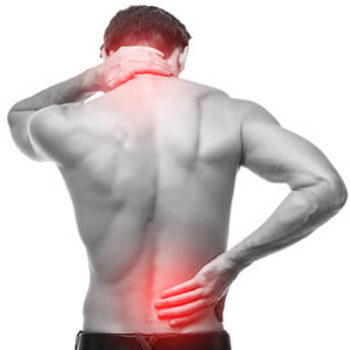+How It Causes Depression
You can eat a healthy diet, exercise religiously, and follow every single one of your doctor’s recommendations but no matter how healthy or well-conditioned your body may be, at some point, your lower back is almost destined to cause you problems.
For most people, low back pain is just a minor annoyance that emerges once in a while, sticks around for a couple of days, then goes away. For other people, there’s no break from the pain.
When pain becomes long-lasting, it goes far beyond a physical sensation. It can affect your emotions, too. The back pain can become a black hole for all of life’s bumps in the road. Everything is blamed on the back pain. If the back pain were better, everything would be better. At the very least, poorly managed stress and unaddressed relationship or emotional problems can lead to muscle tension and subsequent back pain.
How well you cope with your low back pain, and whether you get the right treatment for the physical and emotional impacts of it, will determine whether you control your pain — or it controls you.
THE PAIN-EMOTION CONNECTION
Low back pain can be more than just physical. It can have a deep effect on your mood, and just about every other part of your life. Chronic pain is something that interferes with every aspect of daily living. You can’t concentrate, and you can’t remember things as well. It affects your appetite as well as your sleep.
People who are in constant pain may worry that they won’t be able to work or go about their daily activities. With all of that stress, “It makes sense that people get depressed, anxious, and irritable,” Jamison says.
Pain is more than just unpleasant sensations traveling through your nervous system. It also involves your perception, feelings, and thoughts. The worse you think your pain will be the worse it feels.
Some people with low back pain enlarge their pain until it explodes into something far deeper than it really is…a tendency which is known as catastrophizing. Catastrophizing is an irrational thought a lot of us have in believing that something is far worse than it actually is. In reality, it may only be a temporary situation, and there are things that you can do to change this situation. When you catastrophize, a whole range of scenarios runs through your mind. You imagine your back becoming so weakened and painful that you have to quit your job and stay at home. You even imagine a future in which you’re confined to a wheelchair.
The physical and emotional toll of living in constant pain leads nearly a third of people with chronic pain to become clinically depressed. About 75% of people who are being treated for depression report physical symptoms, including pain. If pain can lead to emotional distress, the reverse is also true. The more trouble you have dealing with stress, the more likely you are to experience pain.
Stress and pain can turn into an inescapable cycle. You’re in pain, so you feel stressed and anxious. Stress can cause your muscles to tense up, which increases the pain even more.
Another cycle can emerge, this one centered on fear and avoidance. People will avoid activities that they fear might either make their pain worse or cause them to reinjure themselves. Avoiding physical activity will eventually weaken your body to the point that even if you want to finally go out and do something, you won’t have the strength to do it.
TREATING YOUR PHYSICAL AND EMOTIONAL PAIN
Sufferers of chronic back pain often show signs of depression, and it’s not hard to understand why. After all, severe and constant pain can wear you down by keeping you from sleeping and eating well, adding to your daily stress, preventing you from being physically active, and discouraging you from participating in hobbies or social activities that you enjoy. All of these take a toll on your emotional wellbeing. Moreover, keep in mind that some medications for controlling back pain may also contribute to depression symptoms.
For people with mild to moderate low back pain, a supervised exercise program may be enough to treat physical and psychological symptoms. Many times, when the person exercises under supervision their depression improves, their anxiety can improve, and their avoidance improves as well. The goal of these programs is to strengthen the muscles of your back and the areas that support your back such as the abdomen and teach you how to do everyday activities like lifting and bending without hurting your back.
If you have more chronic severe low back pain, it helps to see not just one doctor, but a whole team of experts that can include your regular doctor, an orthopedic doctor or physiatrist, as well as a chronic pain specialist, physical therapist, and psychologist. All of these specialists should have experience in treating chronic pain.
Plan to be an active participant in your treatment. Keep a journal of your pain, so you can start to see patterns when the pain tends to occur and what triggers it. Then talk to your doctor to learn about the different therapies available. Behavioral therapy can help you cope with your pain and deal with any limitations or depression you’re experiencing as a result.
Relaxation techniques like deep breathing, progressive muscle relaxation, and biofeedback can teach you how to ease the muscle tension that’s contributing to your low back pain. Your doctor may also prescribe medications to relieve pain, help you sleep, or ease your depression and anxiety.
During a biofeedback session, electrodes are attached to your skin. Finger sensors can also be used. These electrodes/sensors send signals to a monitor, which displays a sound, flash of light, or image that represents your heart and breathing rate, blood pressure, skin temperature, sweating, or muscle activity.
When you’re under stress, these functions change. Your heart rate speeds up, your muscles tighten, your blood pressure rises, you start to sweat, and your breathing quickens. You can see these stress responses as they happen on the monitor, and then get immediate feedback as you try to stop them. Biofeedback sessions are typically done in a therapist’s office, but there are computer programs that connect the biofeedback sensor to your own computer.
A biofeedback therapist helps you practice relaxation exercises, which you fine-tune to control different body functions. For example, you might use a relaxation technique to turn down the brainwaves that activate when you have a headache.
SEVERAL DIFFERENT RELAXATION EXERCISES ARE USED IN BIOFEEDBACK THERAPY, INCLUDING:
- Deep breathing, •Progressive muscle relaxation — alternately tightening and then relaxing different muscle groups, •Guided imagery — concentrating on a specific image (such as the color and texture of an orange) to focus your mind and make you feel more relaxed, •Mindfulness meditation — focusing your thoughts and letting go of negative emotions.
BIOFEEDBACK USES
Biofeedback can help many different conditions. Here is a rundown of some biofeedback benefits:
Chronic pain. By helping you identify tight muscles and then learn to relax those muscles, biofeedback may help relieve the discomfort of conditions like low back pain, abdominal pain, temporomandibular joint disorders (TMJ), and fibromyalgia. For pain relief, biofeedback can benefit people of all ages, from children to older adults.
Your temporomandibular joint is a joint that connects your jaw to the temporal bones of your skull, which are in front of each ear. It lets you move your jaw up and down and side to side, so you can talk, chew, and yawn. Problems with your jaw and the muscles in your face that control it are known as temporomandibular disorders (TMD).
Fibromyalgia is a disorder characterized by widespread musculoskeletal pain that can affect your muscles, bones, and joints which is accompanied by fatigue, sleep, memory and mood issues. Symptoms sometimes begin after a physical trauma, surgery, infection or significant psychological stress. In other cases, symptoms gradually accumulate over time with no single triggering event.
Headaches. Headaches are one of the best-studied biofeedback uses. Muscle tension and stress can trigger migraines and other types of headaches and can make headache symptoms worse. There is good evidence that biofeedback therapy can relax muscles and ease stress to reduce both the frequency and severity of headaches. Biofeedback seems to be especially beneficial for headaches when it’s combined with medications.
Anxiety. Anxiety relief is one of the most common uses of biofeedback. Biofeedback lets you become more aware of your body’s responses when you’re stressed and anxious. Then you can learn how to control those responses.
Work with your doctor to come up with a comfortable level of physical activity. Avoid lying on the couch or bed for too long. Again, don’t overwork yourself by refusing to sit down to rest and pace yourself. If you over or under do it, neither will it help your back feel better. Don’t do more than you can comfortably handle. Exercise is good for managing low back pain and stress for many people. However, depending on your health and medical reason for back pain, certain exercises may be harmful. Make sure to discuss an exercise regimen with your doctor first if you have chronic back pain.
It’s important to keep not only your body but also your mind active. If it’s nothing but you and the pain and the four walls, your pain can become pretty large. Keep your mind occupied it can help people cope with the condition. Get together with friends, go to the movies or a show, or take a walk outside to keep your mind off your pain. Take charge of your pain and don’t let your pain take a charge on you.


